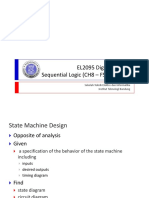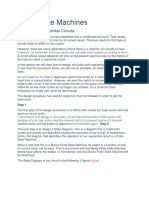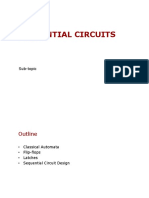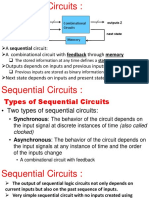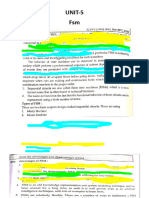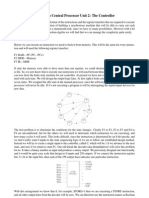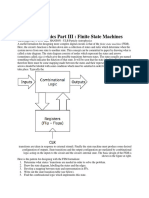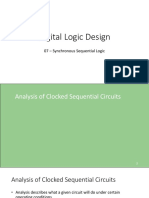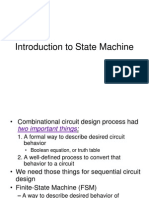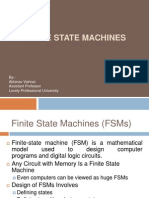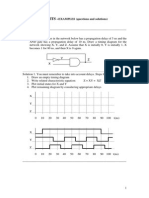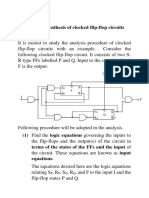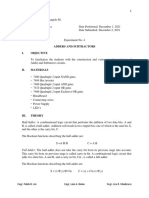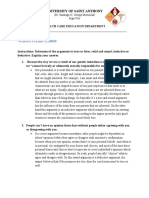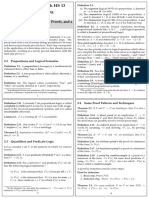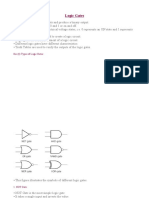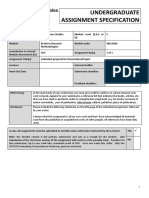0% found this document useful (0 votes)
106 views3 pagesCar Security System-Recitation Example
The document describes a car security system with three inputs - a main switch, vibration sensor, and door sensor. It presents the truth table and boolean expressions to represent the output - the car alarm. The boolean expression is simplified using theorems. A finite state machine approach is then described to address the limitation that the alarm turns off immediately when the triggering condition is removed. The state diagram and next state/implementation tables are provided. Finally, the excitation equation for the D flip-flop is given and the final circuit diagram can be constructed.
Uploaded by
PRaed AliCopyright
© © All Rights Reserved
We take content rights seriously. If you suspect this is your content, claim it here.
Available Formats
Download as PDF, TXT or read online on Scribd
0% found this document useful (0 votes)
106 views3 pagesCar Security System-Recitation Example
The document describes a car security system with three inputs - a main switch, vibration sensor, and door sensor. It presents the truth table and boolean expressions to represent the output - the car alarm. The boolean expression is simplified using theorems. A finite state machine approach is then described to address the limitation that the alarm turns off immediately when the triggering condition is removed. The state diagram and next state/implementation tables are provided. Finally, the excitation equation for the D flip-flop is given and the final circuit diagram can be constructed.
Uploaded by
PRaed AliCopyright
© © All Rights Reserved
We take content rights seriously. If you suspect this is your content, claim it here.
Available Formats
Download as PDF, TXT or read online on Scribd
/ 3
